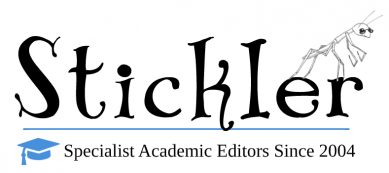Getting your work published in esteemed journals (also known as “periodicals”) is a necessary and important part of academic life, but the process can seem daunting and even confusing at first. Below, we break down the broad strokes of how to get from blank screen to printed article.
First, you have to write
The first step is of course to write a credible article that adds to your field. The writing process involves gathering your research and findings and creating an article that is both informative and engaging. You might work with colleagues to help with research or even co-author your work, and you’ll need to set a definitive objective for your paper. Before you start writing the paper itself, it’s also a good idea to define the audience for your work.
Once you’ve settled on these things, you can start to identify suitable target journals. Researching the different publications in your field and that relate to your objectives and target audience is a good place to start, but you also want to make sure that you’re submitting to recognized and respected journals. The impact factor can help here, but also make sure you look for periodicals that are “peer reviewed” (more on this below).
Once you’ve selected your first-choice journal, and have written your manuscript, you’ll need to polish it up and make sure it conforms to the journal’s style guidelines.
Next, submit to your chosen journal
Once you feel confident in your writing and it meets the criteria mentioned in the section above, it’s time to submit. At this point, assuming you’ve submitted to a high-quality journal, your work will be peer reviewed.
What is peer review?
The peer review process has been around since the 1700s. It entails other academics appraising scholarly work that has been submitted for publication to confirm its quality, which endorses its legitimacy, and to weed out plagiarized or illegitimate work.
The editor of the journal will send your work to a variety of academics in your field (your peers—hence, “peer review”). These scholars will provide feedback to the editor, and, based on their comments, the editor will determine whether your work should be published at this stage. When reviewing your work, reviewers and editors typically want to see that it acknowledges and builds on other work in your field, relies on logical reasoning and well-designed research, and backs up claims with evidence. It must also be well written, conform to the journal’s style guidelines, and have a clear structure.
If you don’t get unconditional acceptance, take on board any feedback and resubmit, or try a different journal
There are several possible outcomes of the peer review stage: your work might be accepted for publication, accepted on condition that certain changes are made, rejected but with the possibility for you to resubmit pending certain changes, or rejected with no opportunity for resubmission. The idea of having your work peer reviewed—and possibly criticized—can feel intimidating, but it’s also a great chance to learn and to enhance your research. Bear in mind also that the submission process is a highly competitive one, and most journals only accept 6–8% of the work sent to them. If you do have to revise your manuscript, take this as an opportunity to strengthen your research, rather than as a personal criticism or a dead end.
If you are asked to revise and resubmit, you’ll typically need to accompany your amended manuscript with a cover letter that details the changes made in response to each point made by the reviewers. It’s important that you take this step seriously and carefully consider the feedback and comments given to you, but that doesn’t necessarily mean you have to incorporate or agree with all the suggestions given. If you do disagree, just be sure to explain in the letter, clearly, politely, and drawing on any relevant evidence, why you have chosen not to follow the reviewer’s advice.
If you receive a rejection, don’t just blindly submit to another journal. Take a step back and ask yourself whether your research could be strengthened in some way; if you’re confident in what you’ve written, move on to the next journal—but do make sure you make any adjustments necessary to meet the new journal’s style guidelines. This might entail, for example, changing the referencing system from APA to Harvard, or making amendments to the language used. We can of course help to make sure your article is styled for your target publication at any stage of the process.
The road to acceptance can be long and arduous; even after acceptance it can sometimes take a year for the work to actually be published. But being published in a peer reviewed journal (as opposed to one that does not incorporate peer review) is a huge accomplishment, because it signals to others that your work is legitimate, meets the standards of your field, and has been accepted and trusted by other respected scholars. Getting published in an esteemed and widely circulated periodical also means that people will read your work, study it, and further their own scholarship and careers because of it.
Don’t forget, in addition to editing your paper we can help you apply style guidelines, get your reference list into shape, and proofread your response letter to make sure it’s not only error free, but strikes the right tone. Get in touch for a quote!










